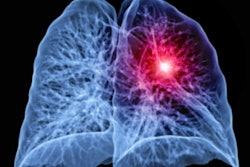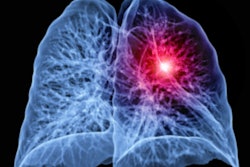
Clinicians use a variety of methods to communicate positive lung cancer screening (LCS) results found on low-dose CT (LDCT) -- but it's not clear which method is most effective, according to a study published June 22 in JAMA Network Open.
It's also unclear whether the communication results in appropriate follow-up, especially for patients with findings categorized as Lung-RADS 3 (probably benign), wrote a team led by Louise Henderson, PhD, of the University of North Carolina in Chapel Hill.
"[Patients] with communications that mentioned benign were significantly less likely to undergo recommended follow-up, suggesting other terms should be considered for communicating Lung-RADS 3 results," the group noted.
Lung cancer screening has been shown to reduce mortality rates among those at high risk of the disease, the authors wrote. In 2021, the U.S. Preventive Services Task Force (USPSTF) expanded the pool of those eligible for screening by lowering the starting age from 55 to 50 and adjusting smoking history from 30 pack years to 20 pack years. But screening rates remain low.
Only 13% to 25% of patients who undergo LCS have positive results, and it's uncertain as to how these positive results are communicated to patients, according to Henderson's team. To assess this, the group conducted a study that evaluated any links between how positive LCS results are communicated and whether patients then receive follow-up care.
The study included 685 patients who underwent lung cancer screening with LDCT between January 2015 and February 2020 and had a positive result (Lung-RADS 3, 4A, 4B, or 4X). Of these, 363 (53%) had Lung-RADS 3 results; 194 (28%) had Lung-RADS 4A results; and 128 (19%) had Lung-RADS 4B or 4X.
Patients were notified of these positive screening results in one of the following ways:
- Mailed letter, voicemail or text message, email, or online portal message
- Telephone conversation with their clinician
- In-person office visit
Information delivered to patients included benign results, abnormal or suspicious results, suggested follow-up, and follow-up timing. Communication methods varied by screening findings, becoming more active the more severe the results.
| Method of communication of positive LCS findings by Lung-RADS category | |||
| Method | Lung-RADS 3 | Lung-RADS 4A | Lung-RADS 4B or 4X |
| Letter, voicemail, text, email, online portal | 26% | 20% | 17% |
| Phone call | 31% | 41% | 45% |
| Office visit | 39% | 35% | 37% |
| No documented communication | 4% | 4% | 2% |
The group also found that follow-up rates varied by Lung-RADS category:
| Method of LCS positive result communication and receipt of follow-up care | |||
| Receipt of follow-up care | Lung-RADS 3 (follow up within 6 months) | Lung-RADS 4A (follow up within 3 months) | Lung-RADS 4B or 4X (follow up within 1 month) |
| Yes | 30% | 49% | 68% |
| No | 70% | 51% | 33% |
"This cohort study found that as the lung cancer suspicion level increased, the communication method shifted from passive to more active modes, consistent with survey data showing clinicians and patients prefer verbal communication modes to discuss suspicious findings," the group reported.
The results highlight the work still needed to better communicate lung cancer screening results to patients, regardless of the Lung-RADS category, according to Henderson and colleagues.
"Our study identifies communication areas to target to increase appropriate follow-up care among patients with positive LCS results," they concluded.





















